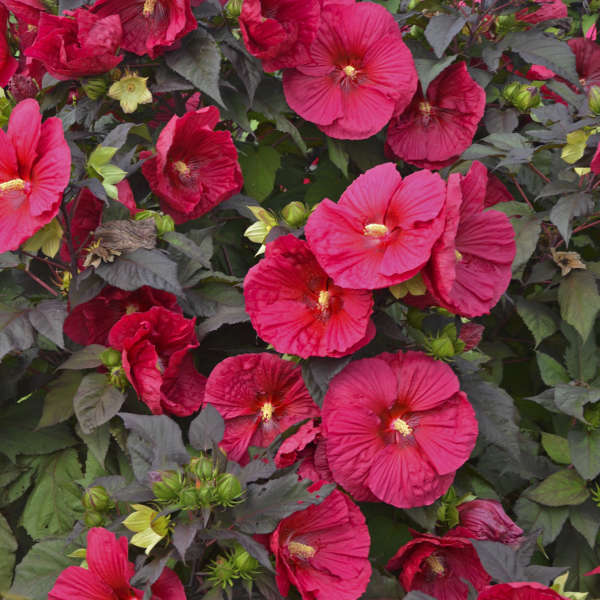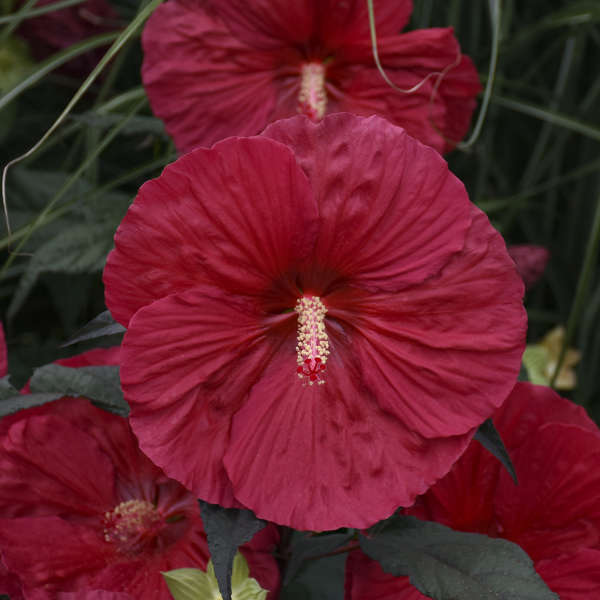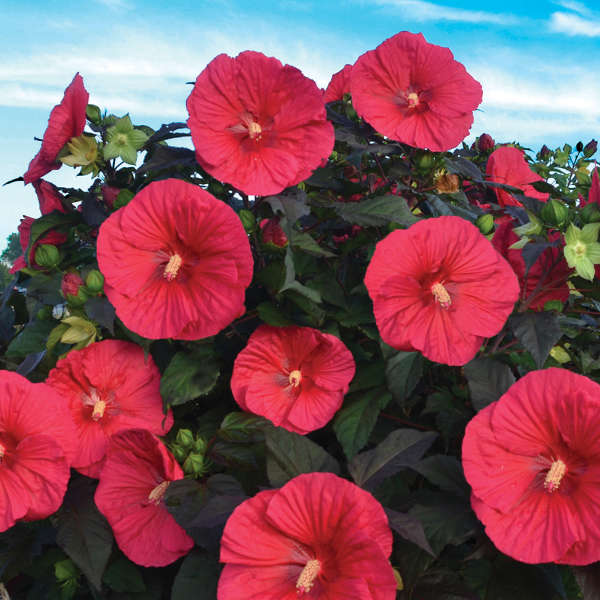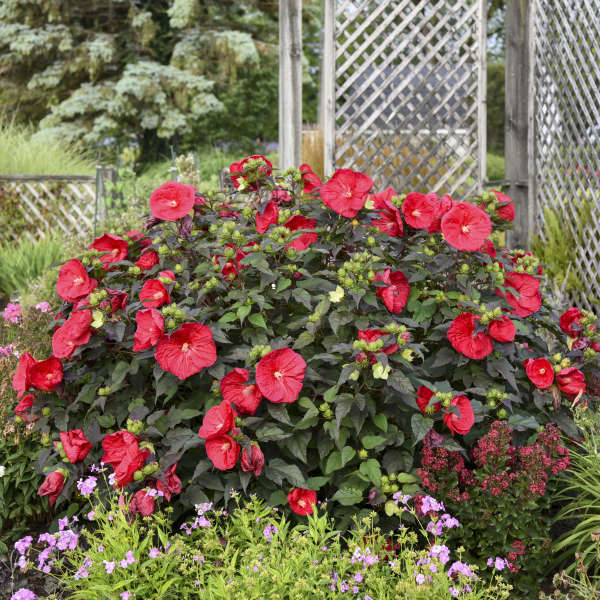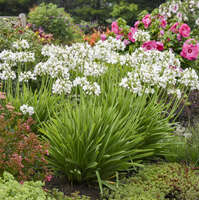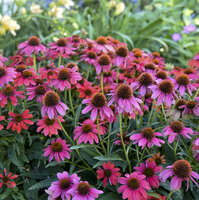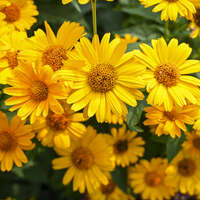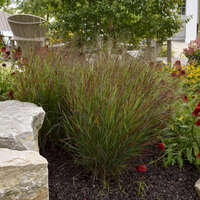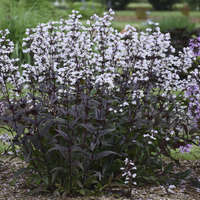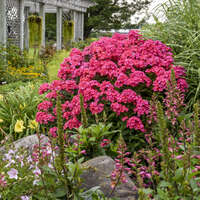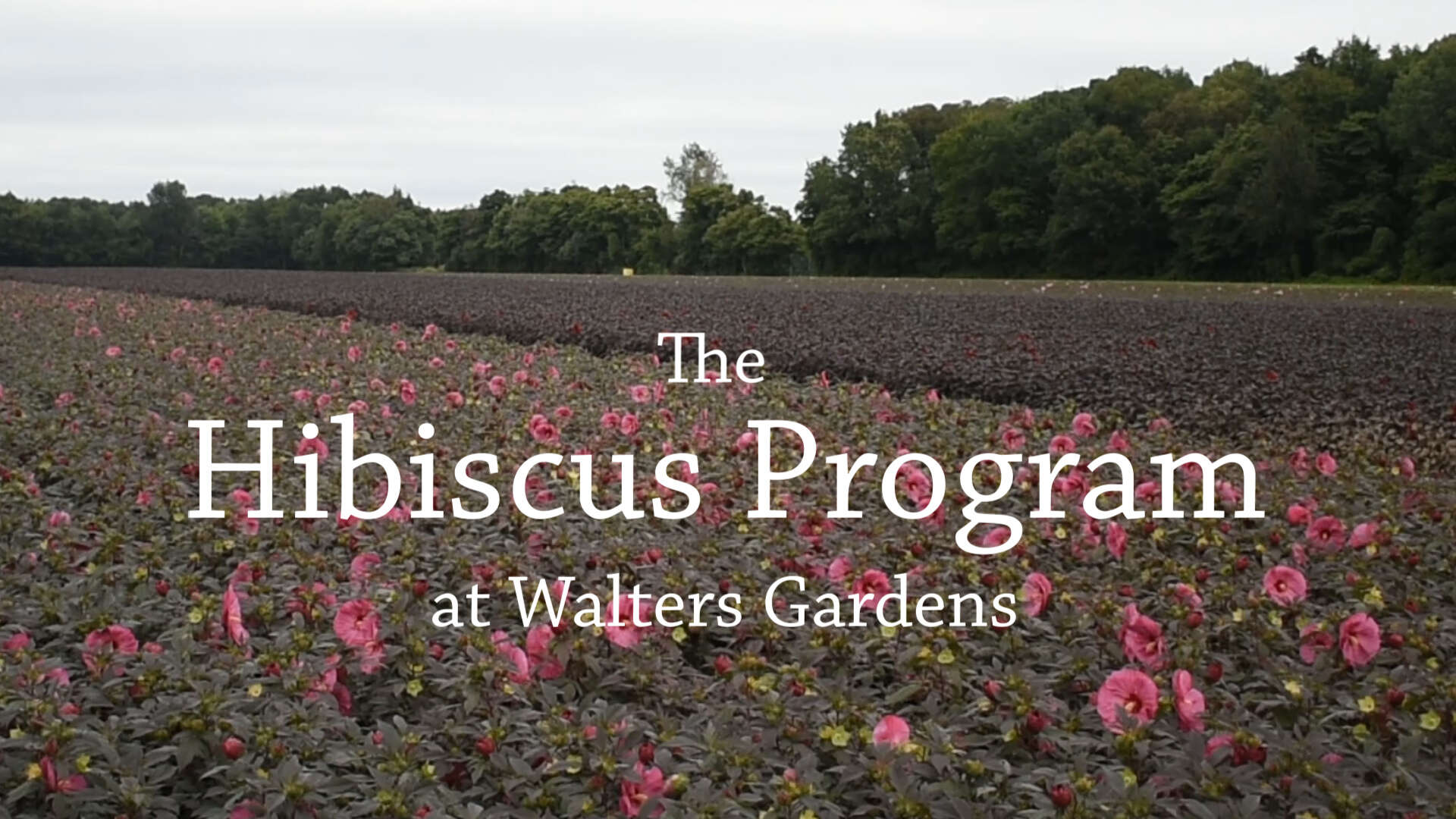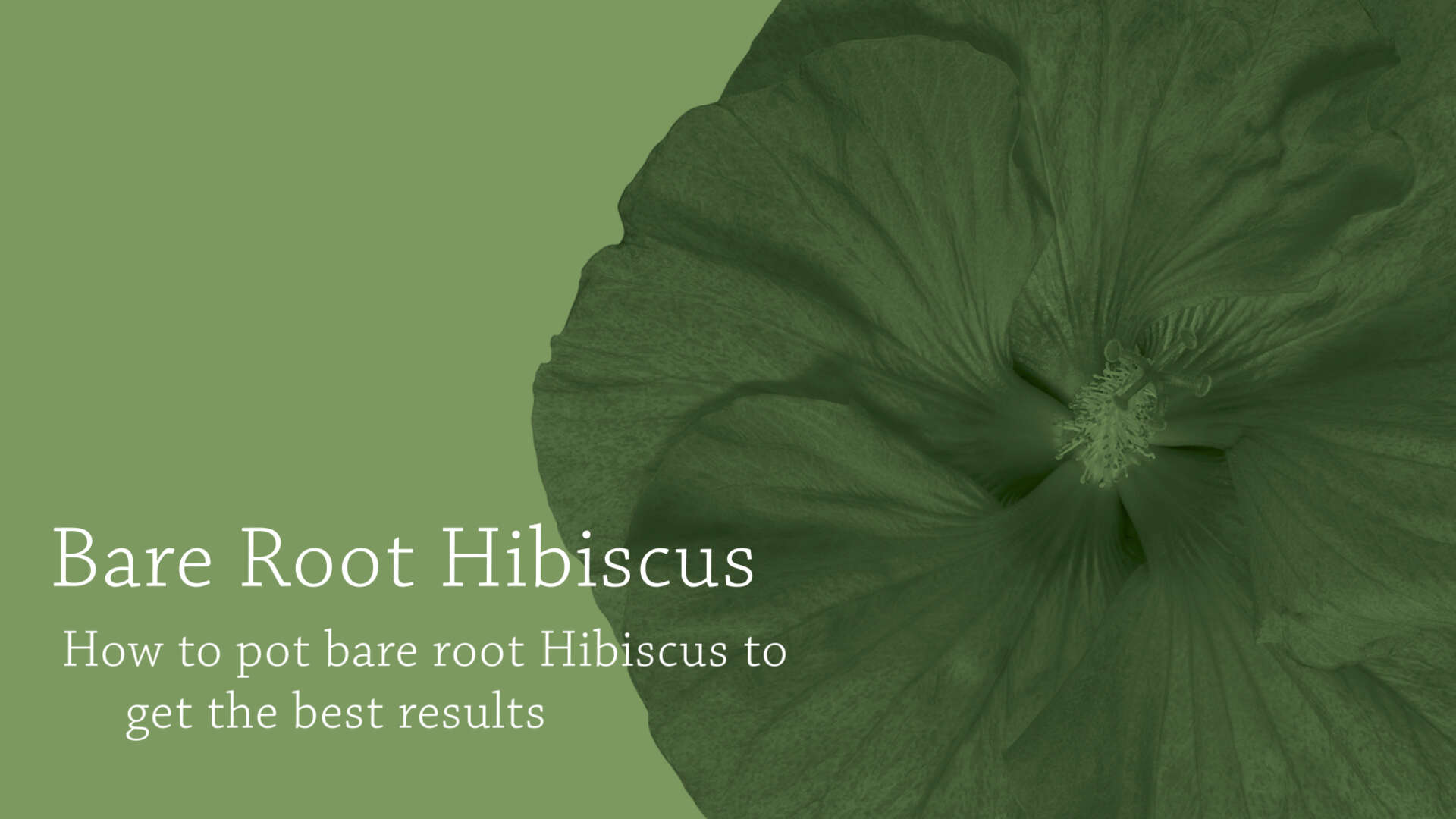Hibiscus 'Mars Madness' PP27838

Common Name: Rose Mallow
This Walters Gardens Hibiscus introduction is out of this world with its unique foliage and flower color combination. Dark olive green leaves have copper highlights, with the newest leaves emerging coppery purple. The large, maple-like leaves are broadly smooth and form a full, billowy habit. Huge 6-8” flowers open flat and are magenta red in color, more on the pink side of the spectrum than ‘Cranberry Crush’. Each flower has a small, darker red halo with overlapping petals and deeply impressed veins. Flowers are produced from the top to the bottom of the plant, rather than only at the top like some older cultivars.
‘Mars Madness’ is a later blooming Hibiscus and will extend the color of your late summer - early fall garden.
These North American native plants bring massive, tropical-looking flowers all the way to zone 4. Although later to emerge than most perennials in spring, these are fast growing plants capable of adding an inch of new growth a day. Excellent at brightening up end of season gardens.
